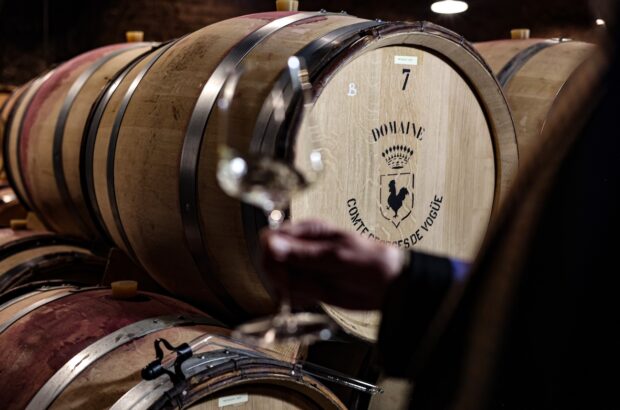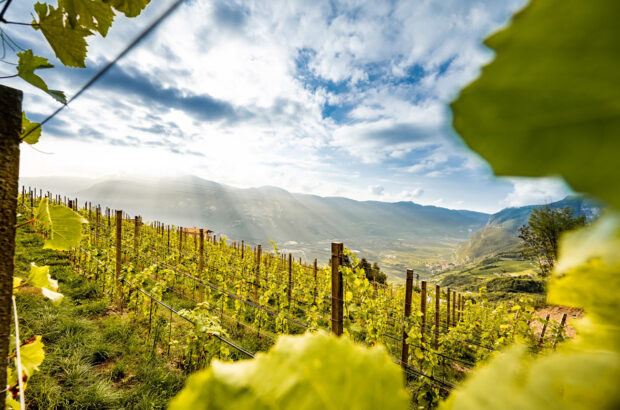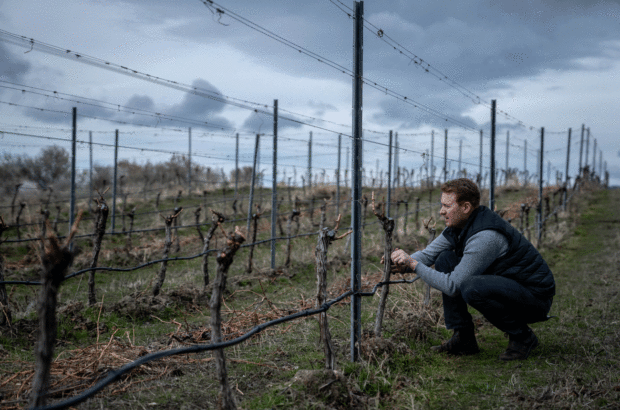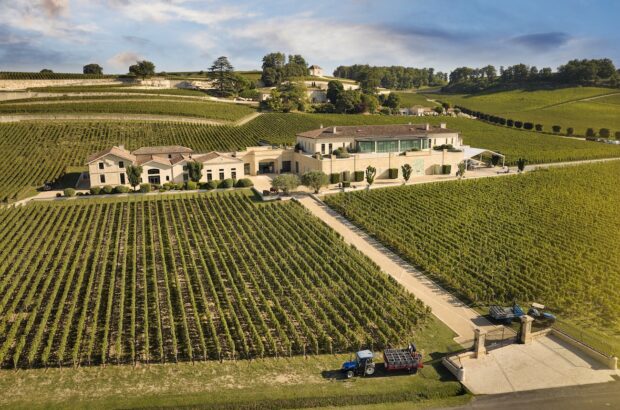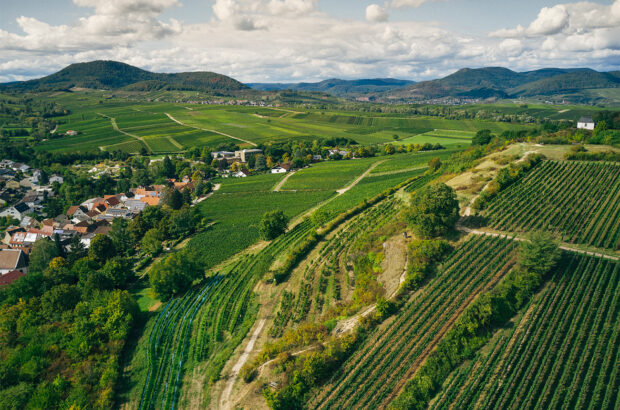It’s easy to overlook the wines of Asti, given the other vinous treasures on offer in the Piedmont region.
In fact, the western border of the Asti DOCG zone extends to Serralunga d’Alba, home to some of Barolo’s most noteworthy wines. Yet Asti is central to the region’s wine industry, representing about 35% of its total production.
According to the Consorzio dell’Asti, 85% of Asti production is exported; key international markets include Germany, Russia and the US.
Scroll down to see tasting notes and scores for the top Asti and Moscato d’Asti wines
The Asti DOC was established in 1967 and was promoted to DOCG status in 1993, although winemaking here predates the modern legislation by centuries.
The DOCG covers 9,700ha of vines in the provinces of Asti, Alessandria and Cuneo, with three defined sub-zones (Santa Vittoria d’Alba, Strevi and Canelli – the latter set to attain its own DOCG as of the 2022 harvest) and four styles of wine.
What are the styles of Asti DOCG?
{"content":"PHA+VGhlIHR3byBtb3N0IGNvbW1vbiBzdHlsZXMgYW5kIHRoZSBmb2N1cyBvZiB0aGlzIHRhc3RpbmcgYXJlIEFzdGkgYW5kIE1vc2NhdG8gZOKAmUFzdGksIHdoaWxlIHRoZSBvdGhlciB0d28gc3R5bGVzIGNvdmVyIEFzdGkgTWV0b2RvIENsYXNzaWNvIOKAkyBvZiB3aGljaCBJ4oCZdmUgaW5jbHVkZWQgb25lIGV4YW1wbGUg4oCTIGFuZCB0aGUgcmFyZSBsYXRlLWhhcnZlc3QgTW9zY2F0byBk4oCZQXN0aSBWZW5kZW1taWEgVGFyZGl2YS48L3A+CjxwPkFsbCBmb3VyIHdpbmUgc3R5bGVzIG11c3QgY29uc2lzdCBvZiBhdCBsZWFzdCA5NyUgTW9zY2F0byBCaWFuY28sIHdpdGggdGhlIGRpZmZlcmVuY2UgbWFkZSB1cCBieSBvdGhlciBsb2NhbCBhcm9tYXRpYyB2YXJpZXRpZXMsIGJ1dCBpbiBwcmFjdGljZSBtb3N0IEFzdGkgd2luZXMgYXJlIHNpbmdsZS12YXJpZXRhbC48L3A+CjxoMz5Bc3RpPC9oMz4KPHA+V2hhdCB3YXMgb2ZmaWNpYWxseSBjYWxsZWQgQXN0aSBTcHVtYW50ZSB1bnRpbCAxOTkzIGlzIG5vdyBvZmZpY2lhbGx5IGp1c3QgJiM4MjE2O0FzdGkmIzgyMTc7ICYjODIxMTsgbm90IHRvIGJlIGNvbmZ1c2VkIHdpdGggdGhlIEFzdGkgRE9DRyBpbiBpdHMgZW50aXJldHkuPC9wPgo8ZGl2IGNsYXNzPSJhZC1jb250YWluZXIgYWQtY29udGFpbmVyLS1tb2JpbGUiPjxkaXYgaWQ9InBvc3QtaW5saW5lLTMiIGNsYXNzPSJpcGMtYWR2ZXJ0Ij48L2Rpdj48L2Rpdj4KPHA+QXN0aSBoYXMgc3VmZmVyZWQgZnJvbSBhIGJhZCByYXAsIGF0IGxlYXN0IGluIHRoZSBVSywgZm9yIGJlaW5nIGxvdy1wcmljZWQsIHNpbXBsZSBhbmQgc3dlZXQuIFRoaXMgaXMgbm90IGVudGlyZWx5IGZhaXIsIGhvd2V2ZXIsIGFzIGluIHRoZSBoYW5kcyBvZiBza2lsbGVkIHdpbmVtYWtlcnMgdGhlc2Ugd2luZXMgZWZmb3J0bGVzc2x5IHNob3djYXNlIHRoZSBpbmNyZWRpYmxlIGZyYWdyYW5jZSBvZiBNb3NjYXRvIEJpYW5jbyAoTXVzY2F0IEJsYW5jIMOgIFBldGl0cyBHcmFpbnMpIHdoZW4gY29tYmluZWQgd2l0aCBQaWVkbW9udOKAmXMgYWx0aXR1ZGluYWwgZnJlc2huZXNzLjwvcD4KPHA+SXQgd2FzIEZlZGVyaWNvIE1hcnRpbm90dGksIGZyb20gdGhlIHByb3ZpbmNlIG9mIEFzdGksIHdobyBpbnZlbnRlZCB0aGUgdGFuayBtZXRob2QgZm9yIGNvbnRyb2xsZWQgZmVybWVudGF0aW9uIGluIGxhcmdlIHZhdHMgaW4gMTg5NS48L3A+CjxkaXYgY2xhc3M9ImFkLWNvbnRhaW5lciBhZC1jb250YWluZXItLW1vYmlsZSI+PGRpdiBpZD0icG9zdC1pbmxpbmUtNCIgY2xhc3M9ImlwYy1hZHZlcnQiPjwvZGl2PjwvZGl2Pgo8cD5GaWZ0ZWVuIHllYXJzIGxhdGVyLCBFdWfDqG5lIENoYXJtYXQgZGV2ZWxvcGVkIHRoZSBhdXRvY2xhdmUgZGVzaWduIHRoYXQgaXMgc3RpbGwgdXNlZCB0b2RheS4gVGhpcyBNYXJ0aW5vdHRpLUNoYXJtYXQgbWV0aG9kIGlzIHVzZWQgZm9yIG1hbnkgc3BhcmtsaW5nIHdpbmVzLCBpbmNsdWRpbmcgUHJvc2VjY28sIGJ1dCBBc3RpIGlzIHVuaXF1ZSBpbiB0aGF0IHRoZSBncmFwZSBtdXN0IGlzIGZlcm1lbnRlZCBvbmx5IG9uY2UuIEl0IGFic29yYnMgc29tZSBvZiB0aGUgY2FyYm9uIGRpb3hpZGUgZHVyaW5nIGZlcm1lbnRhdGlvbiBpbiBwcmVzc3VyaXNlZCBhdXRvY2xhdmVzLCB3aGljaCBnaXZlcyBpdCBpdHMgc3BhcmtsZSwgYW5kIHRoZSBzaW5nbGUgZmVybWVudGF0aW9uIHJldGFpbnMgYWxsIHRoZSBhcm9tYXRpYyBmcnVpdHkgZnJlc2huZXNzIG9mIHRoZSBNb3NjYXRvIGdyYXBlLjwvcD4KPHA+V2hlbiB0aGUgZGVzaXJlZCBhbGNvaG9sIGxldmVsIGlzIHJlYWNoZWQsIHRoZSBhdXRvY2xhdmUgaXMgY2hpbGxlZCB0byBzdG9wIGZlcm1lbnRhdGlvbiBhbmQgdGhlIHdpbmUgaXMgZmlsdGVyZWQgdG8gcmVtb3ZlIHRoZSB5ZWFzdCBiZWZvcmUgYm90dGxpbmcuPC9wPgo8ZGl2IGNsYXNzPSJhZC1jb250YWluZXIgYWQtY29udGFpbmVyLS1tb2JpbGUiPjxkaXYgaWQ9InBvc3QtaW5saW5lLTUiIGNsYXNzPSJpcGMtYWR2ZXJ0Ij48L2Rpdj48L2Rpdj4KPHA+UHJvZHVjdGlvbiByZWd1bGF0aW9ucyB0cmFkaXRpb25hbGx5IHN0aXB1bGF0ZWQgdGhhdCBzcGFya2xpbmcgQXN0aSBzaG91bGQgaGF2ZSBhbGNvaG9sIG5vIGhpZ2hlciB0aGFuIDkuNSUsIGJ1dCBtb2RpZmljYXRpb25zIGluIDIwMTcgYW5kIDIwMjAgZWxpbWluYXRlZCB0aGlzIGxpbWl0LCBtZWFuaW5nIHRoYXQgdG9kYXkgQXN0aSBjYW4gYmUgZmVybWVudGVkIHRvIGRyeW5lc3MsIG5hdHVyYWxseSByZWFjaGluZyAxMSUtMTEuNSUgYWxjb2hvbC48L3A+CjxwPkFtb25nIHRoZSAyNCBzcGFya2xpbmcgQXN0aSBzYW1wbGVzIEkgdGFzdGVkIGZvciB0aGlzIGZlYXR1cmUsIHRoZXJlIHdlcmUgb25seSBhIHRyaW8gb2YgZHJ5IChzZWNjbykgQXN0aSwgYnV0IEkgZm91bmQgdGhhdCB0aGlzIHN0eWxlIHdvcmtlZCBleGNlbGxlbnRseSB3aXRoIHRoZSBkZWxpY2F0ZSBmbG9yYWwsIGZydWl0eSBjaGFyYWN0ZXIgb2YgTW9zY2F0by48L3A+CjxwPlRoZSBhZGRpdGlvbmFsIGFsY29ob2wgYW5kIGxlYW5lciwgZnJlc2hlciBmZWVsIGdpdmUgdGhlc2Ugc2VjY28gd2luZXMgYSBiaXQgbW9yZSBwdW5jaCBhbmQgc3RydWN0dXJlIGNvbXBhcmVkIHRvIHRyYWRpdGlvbmFsIHN3ZWV0IChkb2xjZSkgd2luZXMuIFRoZSBBc3RpIFNlY2NvIHN0eWxlIGlzIHdlbGwgc3VpdGVkIHRvIG1vZGVybiBjb25zdW1lciB0YXN0ZXMsIHNvIGV4cGVjdCB0byBzZWUgbW9yZSBvZiBpdCBvbiB0aGUgc2hlbHZlcy48L3A+Cjxocj4KPGgzIHN0eWxlPSJ0ZXh0LWFsaWduOiBjZW50ZXI7Ij48YSBocmVmPSJodHRwczovL3d3dy5kZWNhbnRlci5jb20vd2luZS1yZXZpZXdzL3NlYXJjaD9xdWVyeT0jZmlsdGVyJTVCYXBwZWxsYXRpb24lNUQlNUIwJTVEPTY4MSZhbXA7ZmlsdGVyJTVCYXBwZWxsYXRpb24lNUQlNUIxJTVEPTI2NTkmYW1wO2ZpbHRlciU1QmFwcGVsbGF0aW9uJTVEJTVCMiU1RD0zMDUmYW1wO2ZpbHRlciU1QmFwcGVsbGF0aW9uJTVEJTVCMyU1RD0yNzQ5JmFtcDtmaWx0ZXIlNUJhcHBlbGxhdGlvbiU1RCU1QjQlNUQ9MjM1MCZhbXA7ZmlsdGVyJTVCdGFzdGluZ19kYXRlJTVEJTVCZnJvbSU1RD0yMDIxLTAzLTE5JTIwMDA6MDA6MDAmYW1wO2ZpbHRlciU1QnRhc3RpbmdfZGF0ZSU1RCU1QnRvJTVEPTIwMjEtMDMtMjIlMjAwMDowMDowMCZhbXA7b3JkZXIlNUJzY29yZV9hdmVyYWdlJTVEPWRlc2MmYW1wO3BhZ2U9MSIgdGFyZ2V0PSJfYmxhbmsiIHJlbD0ibm9vcGVuZXIgbm9yZWZlcnJlciI+PHN0cm9uZz5TZWUgYWxsIDU5IE1vc2NhdG8gYW5kIE1vc2NhdG8gZCYjODIxNztBc3RpIHdpbmVzIHRhc3RlZCBmb3IgdGhpcyBmZWF0dXJlPC9zdHJvbmc+PC9hPjwvaDM+Cjxocj4KPGgzPk1vc2NhdG8gZCYjODIxNztBc3RpPC9oMz4KPHA+TW9zY2F0byBk4oCZQXN0aSBpcyB0aGUgc3dlZXRlciwgZnJpenphbnRlIGFsdGVybmF0aXZlIHRvIHNsaWdodGx5IGRyaWVyIGFuZCBmdWxseSBzcGFya2xpbmcgQXN0aS48L3A+CjxkaXYgY2xhc3M9ImluamVjdGlvbiI+PC9kaXY+CjxwPlRoZSBjb21wbGV4aXR5IG9mIGZsb3JhbCBub3RlcyDigJMgZXNwZWNpYWxseSBpbiB3aW5lcyBmcm9tIHRoZSBDYW5lbGxpIHN1Yi16b25lIOKAkyBhbmQganVpY3kgZXhvdGljIGZydWl0cywgY29tYmluZWQgd2l0aCBzdWJ0bGUgbGlja3Mgb2YgY3JlYW0sIGdlbnRsZSBmaXp6IGFuZCByb3VuZGluZyBzdWdhciwgbWFrZXMgTW9zY2F0byBk4oCZQXN0aSBhIHN1cGVyYiBzdW5zaGluZSB3aW5lIOKAkyBhbmQgaXRzIGxvdyBhbGNvaG9sIGxldmVsIGlzIGlkZWFsIGZvciBsYXp5IGx1bmNoZXMhPC9wPgo8cD5KdXN0IGJlIGF3YXJlIHRoYXQgd2hpbGUgdGhlIGFsY29ob2wgbGV2ZWwgbWlnaHQgZW5jb3VyYWdlIHlvdSB0byBwb2xpc2ggb2ZmIGEgYm90dGxlIGJ5IHlvdXJzZWxmLCBNb3NjYXRvIGTigJlBc3RpIGdlbmVyYWxseSBjb250YWlucyBtb3JlIHN1Z2FyIHBlciBsaXRyZSB0aGFuIENvY2EtQ29sYSBhdCAxMDZnL0whPC9wPgo8cD4K"}
The top Asti and Moscato d’Asti wines:
See all 59 wines tasted for this feature
{}
{"wineId":"51172","displayCase":"standard","paywall":true}
{"wineId":"51174","displayCase":"standard","paywall":true}
{"wineId":"51171","displayCase":"standard","paywall":true}
{"wineId":"51173","displayCase":"standard","paywall":true}
{"wineId":"51178","displayCase":"standard","paywall":true}
{"wineId":"51181","displayCase":"standard","paywall":true}
{"wineId":"51177","displayCase":"standard","paywall":true}
{"wineId":"51182","displayCase":"standard","paywall":true}
{"wineId":"51186","displayCase":"standard","paywall":true}
{"wineId":"51190","displayCase":"standard","paywall":true}
{"wineId":"51191","displayCase":"standard","paywall":true}
{"wineId":"51195","displayCase":"standard","paywall":true}
{"wineId":"51196","displayCase":"standard","paywall":true}
{"wineId":"51201","displayCase":"standard","paywall":true}
{"wineId":"51199","displayCase":"standard","paywall":true}
{"wineId":"51200","displayCase":"standard","paywall":true}
{"wineId":"51202","displayCase":"standard","paywall":true}
{"wineId":"51197","displayCase":"standard","paywall":true}
{"wineId":"51198","displayCase":"standard","paywall":true}
{"wineId":"51209","displayCase":"standard","paywall":true}
{"wineId":"51221","displayCase":"standard","paywall":true}
{"wineId":"51218","displayCase":"standard","paywall":true}
{"wineId":"51220","displayCase":"standard","paywall":true}
{}
Related content





